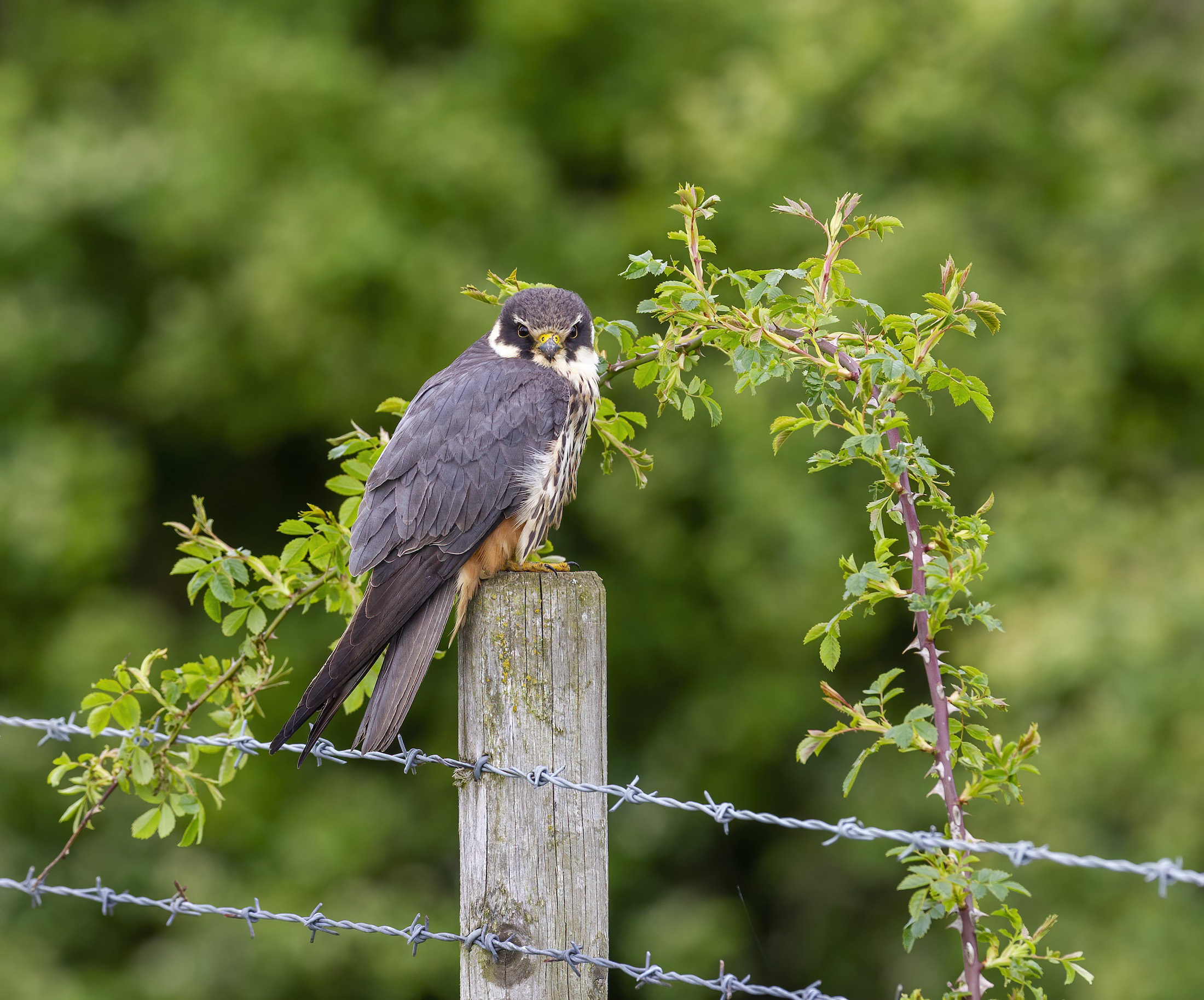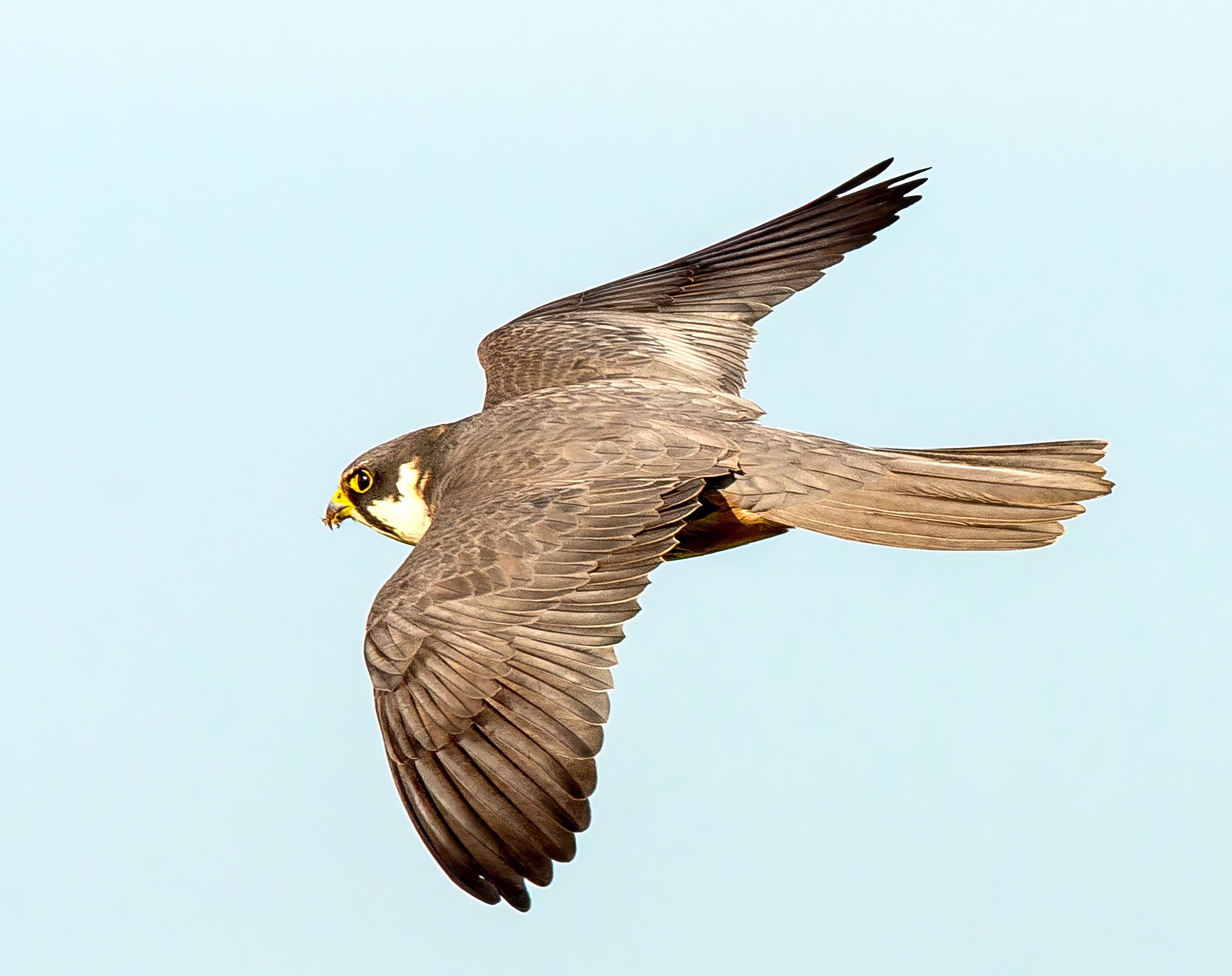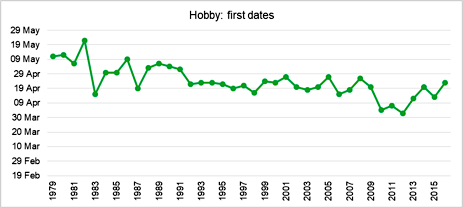Hobby Falco subbuteo
Scarce summer visitor and passage migrant. Bred to early 1900s and sporadically in the 1970s, regularly from the mid-1980s.


Hobbies are scarce passage migrants and summer visitors breeding in increasing numbers since the mid-1980s (see below). The Birds of Lincolnshire & South Humberside, published in 1989, mentioned that six pairs bred in 1988. Since then numbers have substantially increased and it was estimated that there were 71 pairs in 2016 and 63 pairs in 2017. Exceptional first dates during 1979-2016 have included birds at Marston STW on January 4th, 5th and 16th 2016; Covenham Reservoir on 20th January 1987; Gibraltar Point on February 1st and 4th 2016; Hobhole Drain on 20th March 2011; Waddington on 27th March 2002. One might speculate that these birds never migrated south at all. The last birds of the year are usually recorded in October with recent examples being of birds at Frampton Marsh on 20th October 2016 and October 28th 2017. In the 38 years from 1979 to 2016, Hobby spring first arrival dates have moved progressively earlier (see table and chart below). The last dates in autumn have become later but with a less clear trend. The calculations for first dates exclude the few anomalously early reports, above, and the autumn calculations exclude one found dead on 5th October 1984 and another found injured in early October 1990. To a degree, the extended period when Hobbies are present may be related to the larger population, and thus a higher chance of birds arriving early or staying late, but it may well be a genuine trend for the whole population.
| Period | First spring date | Last autumn date |
| 1979-1997 | April 29th | October 1st |
| 1997-2016 | April 15th | October 8th |

The lack of proven breeding records of Hobby in the county belies the true status of this elusive but widespread breeding species. From unpublished fieldwork around the year 2000 Graham Catley, extrapolating from an observed density of 1.3 pairs per 10km square in the north of the county, estimated that there may be 80–100 pairs in Lincolnshire. This figure probably still holds good though there does appear to be considerable annual variation in the number of birds breeding in some areas and RBBP records show an average of 69 pairs per year bred during the period 2013-2017. Established breeding pairs typically return in the second half of April with young fledging from the first week of August to the third week. Young remain within 1km of the nest for up to five weeks and males have been seen still feeding young in early October. In breeding pairs females typically depart first and males last but odd juveniles may linger to mid-October. Favoured breeding habitats range from the edge of mature woodlands, to heathlands but are in the main scattered across the arable landscapes of the county with nests typically in trees within hedgerows. Few of the ringed nestlings in the county have been recovered but three of interest are ET32462 ringed in August 2003 and recovered (shot) in Hampshire in September 2015 when it was more than 12 years old; EK63443 ringed in Buckinghamshire in August 1984 and found dead in the county just two months later; lastly, EW23492 ringed in August 2007 and found freshly dead in July 2008 in Aussenhafen Hooksiel, Germany in July 2008.
